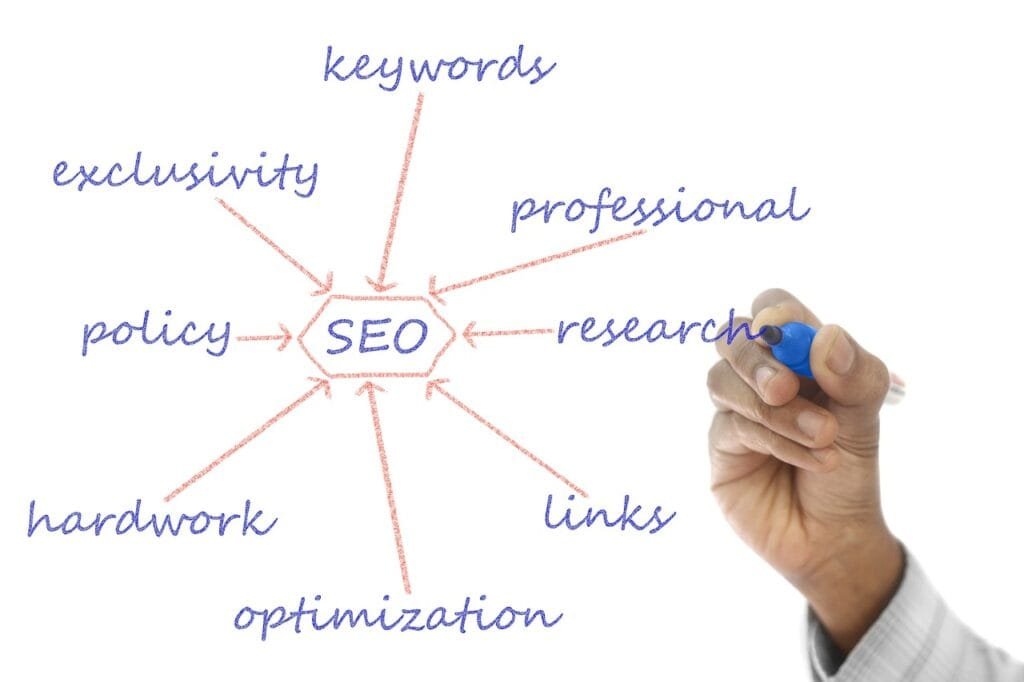Understanding Marketing Mix
Definition of Marketing Mix
When discussing the marketing mix, it’s essential to understand that it encompasses several fundamental elements that collectively influence a company’s marketing strategy. The traditional marketing mix is defined by the four Ps: Product, Price, Place, and Promotion. These components work in unison to help businesses reach their marketing goals.
Product involves the goods or services offered by a company to meet the needs and preferences of consumers. It covers all aspects, from design and features to quality and packaging. For more information, see product in marketing mix.
Price is the amount consumers pay for the product. It affects the company’s profitability and market penetration. Businesses need to carefully consider their pricing strategies to balance between being competitive and achieving their financial objectives. Learn more at price in marketing mix.
Place refers to the distribution channels and locations where the product is available for consumers. This element ensures that products are accessible to the target audience efficiently and effectively. For detailed insights, visit place in marketing mix.
Promotion encompasses the various ways a company communicates with its customers to inform them about the product and persuade them to purchase. This includes advertising, public relations, social media, and more. One can read further on the subject of promotion strategies here.
The marketing mix is crucial as it provides a structured approach for businesses to create a cohesive and effective marketing strategy. By carefully balancing the four Ps, companies can optimize their offerings and reach their target market effectively.
Importance of Marketing Mix
The importance of the marketing mix cannot be overstated. Each component of the marketing mix plays a vital role in creating a successful marketing strategy. Here are key reasons why the marketing mix is important:
Holistic View: It provides a comprehensive framework for businesses to evaluate and improve their marketing strategies, ensuring that all aspects are aligned with the overall business objectives.
Flexibility: It allows businesses to adapt to changes in the market and consumer behavior by adjusting different elements of the mix. This adaptability is crucial in today’s dynamic market environment.
Customer Focus: By understanding and manipulating the marketing mix elements, businesses can cater to their target audience’s needs more effectively, leading to higher customer satisfaction and loyalty.
Optimization of Resources: A well-balanced marketing mix helps in optimizing the allocation of marketing resources, ensuring that time, money, and efforts are spent efficiently. For further reading on the effectiveness of the marketing mix, see marketing mix effectiveness.
Strategic Planning: It aids in strategic decision-making by providing clear guidelines on how to manage product placement, pricing, distribution, and promotional activities. This strategic planning is essential for achieving long-term business success. For insights into strategic marketing, visit strategic marketing mix.
Here is a brief comparison of how each element contributes to the overall marketing strategy:
| Element | Contribution |
|---|---|
| Product | Satisfies consumer needs and drives demand. |
| Price | Impacts profitability and market positioning. |
| Place | Ensures product availability and convenience. |
| Promotion | Builds awareness and persuades consumers to purchase. |
For a detailed exploration of the key components and strategies within the marketing mix, you can visit marketing mix definition and marketing mix components. Understanding the marketing mix is fundamental for any business leader looking to optimize their marketing efforts and achieve sustainable growth.
Elements of Marketing Mix
To effectively market a product or service, it’s essential to understand the key elements of the marketing mix. These elements play a crucial role in shaping a comprehensive marketing strategy. The elements include product strategy, pricing strategy, placement strategy, and promotion strategy.
Product Strategy
Product strategy involves the decisions related to the product or service being offered. In essence, it’s about what the company will sell. This includes decisions about product design, features, quality, branding, and packaging. A well-defined product strategy ensures that the product meets the needs and wants of the target market. For more information on this topic, check out product in marketing mix.
Key aspects to consider:
- Product design and features
- Quality and performance
- Branding and packaging
- Product lifecycle management
Pricing Strategy
Pricing strategy refers to the process of determining the appropriate price for a product or service. It involves evaluating the perceived value of the product, analyzing competitor pricing, and considering cost structures. An effective pricing strategy helps in maximizing profits while ensuring that the price is attractive to customers. Explore more about this in price in marketing mix.
Key factors to analyze:
- Cost of production and distribution
- Competitive pricing analysis
- Customer perceived value
- Pricing models (e.g., penetration pricing, skimming pricing)
Placement Strategy
Placement strategy, also known as distribution strategy, focuses on how the product will be delivered to the end customer. This involves selecting the appropriate distribution channels and methods to ensure the product reaches the target market efficiently and effectively. Delve deeper into this topic at place in marketing mix.
Critical components include:
- Distribution channels (e.g., direct sales, retail, online)
- Supply chain management
- Logistics and warehousing
- Market coverage (e.g., intensive, selective, exclusive)
Promotion Strategy
Promotion strategy is about deciding the best way to promote a product or service, based on factors like the product itself, the pricing, and the target market’s location (Top Management Degrees). Promotion is crucial as it helps in getting potential customers familiar with the product, increasing awareness, and generating excitement.
Core elements in promotion strategy:
- Advertising campaigns
- Sales promotions
- Public relations and events
- Digital marketing and social media
To understand more about the various promotional tactics and their impact, visit promotion in marketing mix. Also, consider internal links such as marketing mix models for a detailed analysis of how each element interrelates within the marketing strategy.
These elements form the foundation of an effective marketing mix, allowing businesses to create a cohesive and strategic approach to marketing their products or services. For further reading, check marketing mix examples and understand how various companies have successfully implemented these strategies.
The Role of Promotion in Marketing
The role of promotion in the marketing mix is crucial for driving awareness, interest, and sales of a product. Promotion encompasses a variety of techniques and channels used to communicate with potential customers, helping them understand the value of the product and persuading them to make a purchase.
Promotion’s Impact on Sales
Promotion plays a significant role in boosting sales by creating awareness and generating interest in a product. Effective promotion strategies can turn potential prospects into loyal customers. According to CoSchedule, promoting in the right manner to the right audience optimizes time and resources, increasing the chances of converting promotional spend into purchases.
| Factor | Impact on Sales |
|---|---|
| Brand Awareness | Increases potential customer base |
| Customer Engagement | Builds loyalty and repeat purchases |
| Competitive Edge | Differentiates the product in the market |
| Purchase Intent | Directly drives conversions and sales |
By strategically planning promotional activities, companies can maximize their promotional budget’s efficacy. By doing so, they ensure that every dollar spent on promotion translates into increased product awareness and, ultimately, higher sales. This can provide valuable insights for handling other components of the marketing mix effectively.
Crafting Promotion Strategies
Crafting an effective promotion strategy involves a systematic approach and clear goals. A promotion strategy outlines the plan and tactics surrounding a product’s promotion, focusing on the objectives behind the promotion and the steps taken to promote the product effectively (CoSchedule).
Key elements to consider:
- Define Objectives: Clearly define the goals of the promotion, such as increasing brand awareness, generating leads, or boosting sales.
- Identify Target Audience: Tailor the promotion to the specific needs and preferences of the target audience.
- Select Channels: Choose the appropriate channels for promotion, including digital platforms, traditional media, and events.
- Develop a Message: Craft a compelling message that resonates with the target audience and clearly communicates the product’s unique value proposition.
- Allocate Budget: Determine the budget for the promotion and allocate resources efficiently across different promotional activities.
- Measure Effectiveness: Set measurable goals and track performance using key performance indicators (KPIs) to evaluate the success of the promotion.
For example, to drive promotion strategies, a company can align efforts with their unique value proposition, ensuring that all promotional messages resonate with this core element. Additionally, by linking promotional efforts with the overall marketing strategy, businesses can build a strong brand image, fostering trust and loyalty among customers (LinkedIn).
By implementing these steps, companies can develop robust promotion strategies that not only drive sales but also enhance their brand image and maintain a competitive edge in the market.
For more on how promotion interlaces with the broader marketing strategy, check out our resources on marketing mix strategies and promotional strategy.
Types of Promotion Strategies
When understanding the role of promotion in the marketing mix, it’s key to differentiate between various promotion strategies. Promotion strategies are crafted to meet business objectives, from creating awareness to boosting sales. Here, we will explore three essential types of promotion strategies: Pull Promotion Strategy, Push Promotion Strategy, and Sales Promotion Strategy.
Pull Promotion Strategy
A Pull Promotion Strategy aims to create consumer demand directly, enticing them to actively seek out a product. This method leverages advertising and mass media to generate excitement and awareness among consumers, making the product a sought-after commodity.
Key tactics include:
- Advertising: Leveraging TV, radio, digital ads to build brand recognition.
- Social Media Campaigns: Engaging users with content that sparks interest.
- Content Marketing: Producing valuable content that educates and attracts the audience.
The effectiveness of a Pull Promotion Strategy can be measured through metrics like brand awareness and direct website traffic. For intricate details, read more on strategic marketing mix.
Push Promotion Strategy
Conversely, the Push Promotion Strategy focuses on pushing products through the marketing channels to be closer to the consumer. This strategy is oriented towards channel partners, ensuring the product gets adequate shelf space and visibility at retail outlets.
Key tactics include:
- Trade Shows: Showcasing products to retailers and distributors.
- Discounts & Incentives: Offering price reductions or bonuses to retailers for stocking a product.
- Direct Selling: Sales representatives promoting the product directly to the retailers or wholesalers.
For a comprehensive understanding of how this fits within the 4Ps, see place in marketing mix.
Sales Promotion Strategy
A Sales Promotion Strategy uses short-term tactics to boost product sales and encourage quick customer responses. These campaigns are typical for stimulating product trial or capitalizing on seasonal demand.
Key tactics include:
- Coupons and Rebates: Offering financial incentives to prompt purchases.
- Contests and Sweepstakes: Engaging consumers with the prospect of winning prizes.
- Buy One Get One Free Offers (BOGO): Encouraging increased sales volume through attractive deals.
Below is a table that illustrates how these strategies can vary:
| Strategy Type | Primary Target | Common Tactics | Objective |
|---|---|---|---|
| Pull Promotion | Consumers | Advertising, Social Media | Create demand, Brand awareness |
| Push Promotion | Channel Partners | Trade shows, Discounts | Ensure product availability |
| Sales Promotion | Consumers/Retailers | Coupons, Contests, BOGO | Increase short-term sales |
Each of these strategies serves distinct purposes and can be tailored based on specific business goals. Detailed examples, such as Apple’s Promotion Tactics and Nike’s Marketing Success Stories, show how companies have effectively used these strategies.
By understanding and implementing the right promotion strategy, businesses can significantly enhance their market presence and sales performance. For further exploration, visit our article on marketing mix strategies.
Implementing Promotion Strategies
Tailoring to Target Audience
In the realm of marketing, understanding the target audience is paramount when implementing promotion strategies. By tailoring promotional efforts specifically to the demographics, interests, and behaviors of the target audience, the effectiveness of the campaign is significantly enhanced. According to CoSchedule, promoting the right message to the right audience optimizes time and resources, increasing the chances of turning promotional spend into purchases, raising product awareness, and creating excitement around the product.
| Target Audience Segment | Promo Tactics | Expected Outcome |
|---|---|---|
| Teenagers | Social Media Campaigns | Increased engagement and brand loyalty |
| Working Professionals | Email Newsletters | Enhanced product awareness and retention |
| Senior Citizens | TV and Radio Advertisements | Wider reach and credibility |
To ensure a promotion strategy resonates with the intended audience, marketing professionals should incorporate the following steps:
- Market Research: Identify the needs, preferences, and behaviors of different customer segments.
- Customer Profiling: Create detailed profiles of ideal customers including demographics, psychographics, and buying patterns.
- Customized Messaging: Craft tailored messages that speak directly to the interests and pain points of each segment.
- Selection of Communication Channels: Choose the most appropriate mediums to reach each specific audience segment, such as social media for younger demographics or email marketing for professionals.
For more insights on understanding the target audience, visit our article on identifying target audience.
Execution of Promotion Plans
Once the target audience has been determined, the next step is the execution of promotion plans. This involves developing and implementing actionable steps to bring the promotion strategy to life. Effective execution of promotion plans requires a well-structured approach that covers planning, execution, monitoring, and adjustment.
1. Planning:
- Set Measurable Goals: Establish clear and measurable goals for the promotion campaign, such as increased sales, higher engagement rates, or enhanced brand awareness. Setting measurable goals is vital for the success of marketing efforts (LinkedIn).
- Budget Allocation: Divide the budget across various promotional activities, ensuring the optimal use of resources.
- Timeline Creation: Develop a detailed timeline to keep track of when and where promotional activities will take place.
2. Execution:
- Content Creation: Produce engaging and compelling content for chosen communication channels tailored to the target audience.
- Channel Deployment: Implement promotion across selected channels, such as social media, email, or traditional advertising, ensuring consistent messaging.
- Testing and Optimization: Conduct A/B testing on different campaign elements and optimize based on feedback and performance data.
3. Monitoring:
- Tracking Performance: Use analytics tools to measure campaign performance against set goals.
- Customer Feedback: Collect and analyze customer feedback to understand audience reception and areas for improvement.
4. Adjustment:
- Iterate Strategies: Based on performance metrics and customer feedback, fine-tune promotional strategies for better outcomes.
- Resource Reallocation: If certain channels or messages are performing better, consider reallocating resources to maximize impact.
| Promotion Plan Element | Key Action Items | Tools/Methods |
|---|---|---|
| Planning | Goal setting, budget allocation, timeline creation | SMART goals framework, Gantt charts |
| Execution | Content creation, channel deployment, testing | Canva for design, Google Ads, social media schedulers |
| Monitoring | Performance tracking, customer feedback collection | Google Analytics, social media insights, survey tools |
| Adjustment | Strategy iteration, resource reallocation | Data analytics platforms, feedback analysis tools |
Effective execution of promotion plans is a crucial step in achieving strategic marketing mix goals. For further reading on how to implement successful promotion strategies, visit our articles on marketing mix implementation and marketing mix effectiveness.
Examples of Successful Promotion
Promotion is a vital part of the marketing mix components that helps drive sales and build brand loyalty. By examining successful promotion strategies from leading companies, we can glean valuable insights. Here, I’ll discuss the promotional tactics used by Apple and Nike, two powerhouses known for their innovative marketing approaches.
Apple’s Promotion Tactics
Apple’s promotional strategies have consistently set the company apart in the competitive electronics market. One example is their product launches, often characterized by high anticipation and wide media coverage. Apple’s marketing relies heavily on emphasizing product quality and creating a sense of exclusivity and innovation. This approach has made their product launches major media events.
Key aspects of Apple’s promotion strategies include:
- Product Quality Emphasis: Apple repeatedly highlights its product quality in its advertising and special events. They focus on features, ease of use, and design, creating a narrative of premium value.
- Word-of-Mouth Marketing: Apple leverages its loyal customer base to generate organic buzz. Happy customers sharing their experiences with others act as a powerful promotional tool.
- Collaboration with Media and Celebrities: Apple’s product placements in movies and collaborations with celebrities enhance their visibility and appeal.
The table below shows a summary of Apple’s promotional elements:
| Promotional Element | Description |
|---|---|
| Product Launch Events | High anticipation and media coverage |
| Focus on Product Quality | Emphasis on innovative features and design |
| Word-of-Mouth Marketing | Leveraging customer loyalty |
| Celebrity Collaborations | Enhancing appeal and visibility |
Nike’s Marketing Success Stories
Nike’s promotional strategies are a benchmark in the marketing world, particularly their “Just Do It” campaign. Launched in 1988, this campaign emotionally connected with audiences by sharing stories of both professional and amateur athletes, inspiring action and resilience.
Key elements of Nike’s promotion strategies include:
- Emotional Storytelling: Nike’s campaigns often tell inspiring stories that resonate emotionally with their audience. This builds a strong emotional connection and inspires loyalty.
- Celebrity Endorsements: Collaborations with high-profile athletes and celebrities amplify their brand message and reach wider audiences.
- Engaging Visuals and Slogans: Nike uses powerful visuals and memorable slogans like “Just Do It” to create compelling and motivational ads.
The table below summarizes Nike’s promotional elements:
| Promotional Element | Description |
|---|---|
| Emotional Storytelling | Inspiring stories of athletes |
| Celebrity Endorsements | Collaborations with high-profile figures |
| Engaging Visuals and Slogans | Compelling ads with powerful messages |
For more details on successful marketing campaigns from other well-known brands, you can explore our article on marketing mix examples.
Lessons from Successful Campaigns
Analyzing the promotion tactics of Apple and Nike reveals several important strategies that can be applied to other businesses. Emphasis on product quality, emotional connection with consumers, and strategic collaborations are key factors in their success.
By studying these examples and integrating similar approaches, businesses can enhance their own promotional strategies. For further insights into developing a successful marketing strategy, consider exploring the importance of a unique value proposition and building a strong brand image.
To continue learning about various marketing concepts, you can read about the 4ps of marketing and other marketing mix strategies.
Promotion Strategies for Success
When discussing the role of promotion in marketing, it’s crucial to develop strategies that can effectively drive sales and build a strong brand. Promotion includes various tactics that aim to increase brand visibility, foster customer loyalty, and ultimately boost revenue. Below are key strategies for establishing a unique value proposition and building a strong brand image.
Establishing Unique Value Proposition
A unique value proposition (UVP) sets your product or service apart from competitors. It’s a clear, concise, and memorable statement that highlights what makes your offering unique and why customers should choose it over others.
To develop a compelling UVP:
- Identify Customer Pain Points: Understand the challenges and needs of your target audience.
- Highlight Differentiators: Focus on what makes your product or service unique.
- Make It Memorable: Craft a concise statement that sticks in the minds of consumers.
Examples of effective UVPs:
- Apple: “The best experiences. Only on Apple.”
- Nike: “Just Do It.”
Implementing these UVPs involves using various communication channels, such as social media, email marketing, and traditional advertising, to ensure consistent and broad reach (LinkedIn).
Table: Example UVPs
| Brand | UVP |
|---|---|
| Apple | The best experiences. Only on Apple. |
| Nike | Just Do It. |
| Disney | The happiest place on earth. |
Building Strong Brand Image
A strong brand image is essential for building trust and loyalty with customers. This involves creating a unique and recognizable brand identity that resonates with the target audience, driving sales and fostering long-term customer relationships.
Steps to build a strong brand image:
- Consistency: Ensure consistent use of logos, colors, and messaging across all channels.
- Customer Engagement: Interact with customers through social media, surveys, and feedback forms.
- Quality Content: Develop high-quality content that aligns with your brand values and speaks to your audience.
Effective communication channels like social media are vital for engaging with the audience and building a strong brand presence (LinkedIn).
For more comprehensive insights on various marketing strategies and elements, you can explore our content on marketing mix strategies, strategic marketing mix, and marketing mix examples.
By focusing on establishing a unique value proposition and building a strong brand image, businesses can significantly enhance their promotional efforts in the marketing mix.
Key Elements of a Successful Marketing Strategy
To craft a robust marketing strategy, certain key components must be thoroughly addressed. Among these, identifying the target audience and setting measurable goals stand paramount.
Identifying Target Audience
One of the crucial elements of developing an effective marketing strategy is understanding who the target audience is. This involves segmenting the market based on various factors like demographics, interests, and behaviors. By identifying the target audience, businesses can tailor their marketing messages for better resonance and higher conversion rates (LinkedIn).
Identifying the target audience involves:
- Demographics: Age, gender, income, education level, and occupation.
- Interests: Hobbies, lifestyle choices, and preferences.
- Behaviors: Purchase history, brand interactions, and media consumption.
Understanding these dimensions helps in creating personalized marketing tactics that appeal directly to the audience’s needs and desires. This not only improves engagement but also drives brand loyalty. For detailed insights into identifying a target audience, explore our article on marketing mix research.
| Factor | Description |
|---|---|
| Demographics | Age, gender, income, education level |
| Interests | Hobbies, lifestyle choices |
| Behaviors | Purchase history, brand interactions |
Setting Measurable Goals
Setting measurable goals is another vital component of a successful marketing strategy. Clear, measurable objectives allow businesses to track their progress and evaluate the effectiveness of their marketing efforts (LinkedIn). These goals should be Specific, Measurable, Achievable, Relevant, and Time-bound (SMART).
Goals may include:
- Sales Targets: Achieving a specific percentage increase in sales.
- Market Share: Capturing a certain portion of the market.
- Customer Acquisition: Gaining a specific number of new customers.
- Brand Awareness: Increasing brand visibility and recognition.
Implementing effective communication channels such as social media, email marketing, or traditional advertising is crucial to achieve these goals (LinkedIn). For more on measurable goals, read about marketing mix effectiveness.
| Goal Type | Example |
|---|---|
| Sales Targets | 20% increase in sales |
| Market Share | Capturing 15% of the market |
| Customer Acquisition | Gaining 5,000 new customers |
| Brand Awareness | 25% increase in brand visibility |
By identifying the target audience and setting measurable goals, businesses can significantly enhance their marketing strategy’s efficiency. For more insights, you might want to explore sections such as marketing mix components and marketing mix strategies.




















